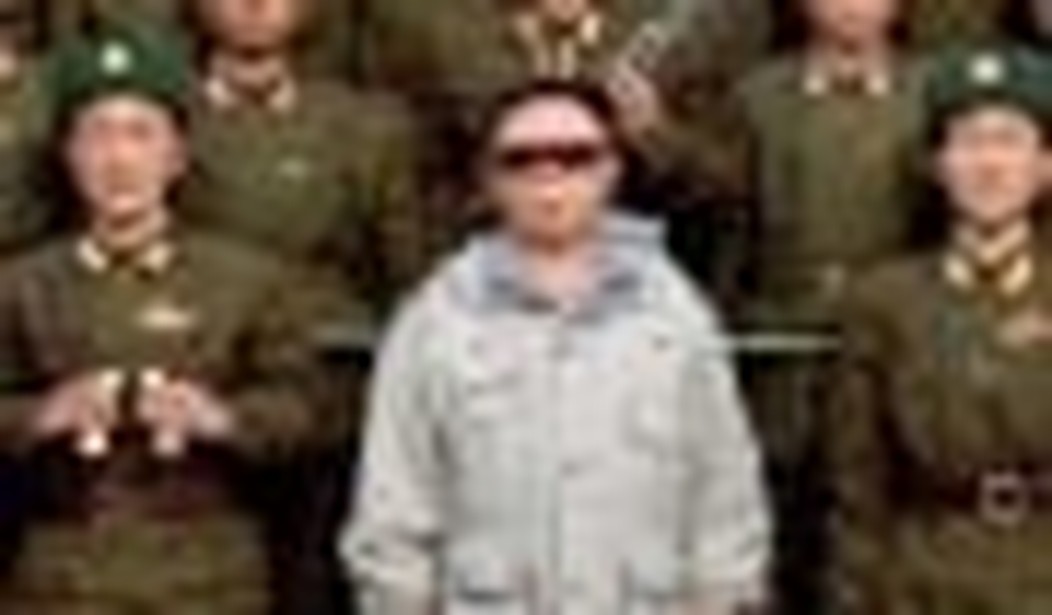On Wednesday, the International Atomic Energy Agency announced that North Korea had barred its inspectors from the reprocessing facility in Yongbyon. This development closely followed Pyongyang’s demand that the agency, the U.N. nuclear watchdog, remove its seals from equipment and take down surveillance cameras. North Korea says it will start reprocessing plutonium in a few days. Even if it does not — it appears its facility is not ready to do so — it’s nonetheless clear that the country “will go its own way,” as its Foreign Ministry said last Friday. By going his own way, Kim Jong Il — or whomever is running North Korea at this moment — is repudiating three years of disarmament agreements reached during a half decade of negotiations
So is North Korea, by precipitating recent events, trying to improve its bargaining position and obtain more benefits from the international community? This is certainly a popular interpretation, especially because it looks as if Kim is trying to take advantage of a weak Bush administration. Christopher Hill, America’s chief negotiator at the Korean talks, says North Korea’s recent moves are just part of the “rough and tumble” of hard bargaining.
Is that so? If we want to know what’s really going on today, we need to examine past nuclear crises with North Korea. Let’s start with the first one. In February 1993, Hans Blix, then head of the IAEA, presented satellite imagery and other evidence to his governing board demonstrating that the North Koreans had not told the truth about their reactor at Yongbyon. As they listened to his presentation, Pyongyang’s delegates first sat with their mouths wide open, then denounced the satellite photos as doctored, and finally walked out. Based on overwhelming evidence, the IAEA board voted to demand “special inspections” of two Yongbyon sites that North Korea had earlier declared off limits.
Caught red-handed and left with no other options, Pyongyang, during the following month, announced its withdrawal from the Nuclear Nonproliferation Treaty, the global nuclear weapons pact. This triggered a series of events, both hurried negotiations and preparations for war, that eventually resulted in the Agreed Framework, a landmark deal signed in October 1994.
Then came the crisis that began in late 2002. In October of that year, American envoy James Kelly, while in Pyongyang, accused the North Koreans of carrying on a secret nuclear arms program based on uranium. To his surprise, the North Koreans boasted that they were doing so.
Kelly’s confrontation with Pyongyang started an unanticipated — and terrifying — downward spiral in relations. The United States in December stopped shipments of heavy fuel oil required by the Agreed Framework, and Pyongyang immediately ejected international weapons inspectors, announced the following January another withdrawal from the Nuclear Nonproliferation Treaty, fired up the Yongbyon reactor shortly thereafter, resumed construction on two other reactors, and removed eight thousand fuel rods from Yongbyon’s cooling pond for the purposes of reprocessing.
This led to a series of consultations and negotiations that resulted in three-party talks followed by six-party talks. The six-party talks, in turn, produced what was described as a “breakthrough.” All six parties to these deliberations issued a statement of principles in September 2005. North Korea at that time committed itself to giving up “all nuclear weapons and existing nuclear programs.” The crisis this month represents the unwinding of the September 2005 deal and subsequent agreements. Secretary of State Condoleezza Rice, trying to downplay concerns, said of this week’s events, “We’ve been through ups and downs in this process before.”
Yes, we have. And by now Ms. Rice should be discerning a pattern to Pyongyang’s behavior. North Korea always creates a crisis when it can no longer cooperate with the international community. In 1993, it had to turn its back on the world’s nonproliferation regime by withdrawing from the Nuclear Nonproliferation Treaty because it did not want to submit to the “special inspections.” It boasted about its uranium program in 2002 to kill the Agreed Framework. It had to do so at that moment because, under the terms of the deal, the North was then required to submit to IAEA inspections. This month, it busted the September 2005 deal because it could no longer evade the issue of verification of its promises. In other words, the North once again refused to submit to inspections.
So there is a recurring historical cycle evident during the last 15 years. That means we can be reasonably sure that, at this time, North Korea is not negotiating for better terms. It is wrecking the six-party process simply because it can no longer adhere to its obligations. Short of military force or other extreme coercive measures, Pyongyang cannot be persuaded to disarm. Despite what Ms. Rice says, this is not just another “down” in the talks. It is the end.








Join the conversation as a VIP Member